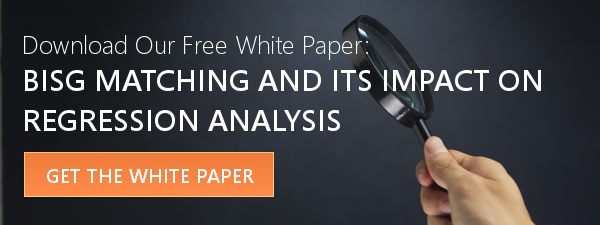In this series of posts, we address types of fair lending discrimination that are commonly recognized by the regulatory and enforcement agencies. The points covered are risk areas that are often examined in the course of regulatory reviews.
It is critical to bear in mind that fair lending laws and regulations are vast and, accordingly, there is almost an infinite number of pressure points. Our goal in this series is simply to draw from our experiences in our fair lending practice and provide information that will assist in reducing risk.
Most fair lending analysis work for commercial banks involves review of data of some sort. This ranges from comparative file reviews with varying degrees of subjectivity, to simple statistical analysis, to more sophisticated methods such as regression analysis. In nearly all instances, such reviews are looking back over a time period involving transactions and contacts with bank customers.
The data analyzed is created by the interaction of the institution’s policies, practices, and lending activity. It is critical to have both clear policies and also monitor and enforce them. As the saying goes, “People do what you inspect, not what you expect.” Proactive and regular monitoring, therefore, is paramount to maintain fair lending compliance.
However, as important as monitoring and analysis is to managing fair lending risk, it is only part of the puzzle. In research, there are what is known as necessary conditions and sufficient conditions. Monitoring and ongoing analysis is a necessary condition to managing fair lending risk. It may not, however, be a sufficient condition.
That being said, a trained and experienced observer who understands lending and the institution’s culture and policies can contextualize and “read” what an analysis of data may suggest. Such information, therefore, is invaluable.
Although there is a considerable amount of information that can be gleaned from data, it is unlikely, however, that data alone can answer every question related to risk. As an example, let’s consider a common fair lending risk: steering. We may analyze a dataset and find that there is nothing to suggest any type of steering or difference in treatment of customers with respect to particular products. To be specific and for the sake of simplicity, let’s assume a bank has (2) products that are similar but have different pricing.
Product A is a home equity closed-end loan with a 60-month term. This product has a rate of 6.0%. Product B is a home equity revolving line that has a rate of 4.5%.
Our analysis indicates that there is no evidence of “steering” of customers to one product or the other, and that’s a favorable (and usually comforting) finding. What we don’t know, however, from the data alone is how the interactions are being handled by the lending staff. Are all products explained to the customer; did the customer make the choice; and what information was provided? The data suggests there is no “issue,” but the data cannot tell us how the day-to-day interactions are being handled and if they are consistent.
As another example, let’s assume our underwriting review indicates there are no differences in denial rates between target and control groups. What we don’t know is how is the application process being handled, and is it consistent?
For example, are protected groups “pre-screened” and there are denials without applications actually being taken. Or, are protected groups discouraged from applying by lenders who suggest they probably cannot approve the loan; thus many denials are not being recorded.
It is important to always bear in mind that fair lending laws and regulations apply to every aspect of the credit transaction – from the initial customer inquiry to the servicing and final settlement of the debt. Clearly regular and robust analysis of data is the most critical component of a successful program and is the lion share of what needs to be done. For many (if not most) institutions, if this is done right, it may be adequate. Depending on the institution, however, vulnerabilities may remain.
We will expand on these in Part 2.



